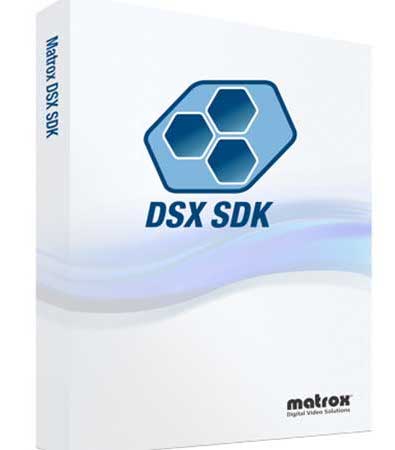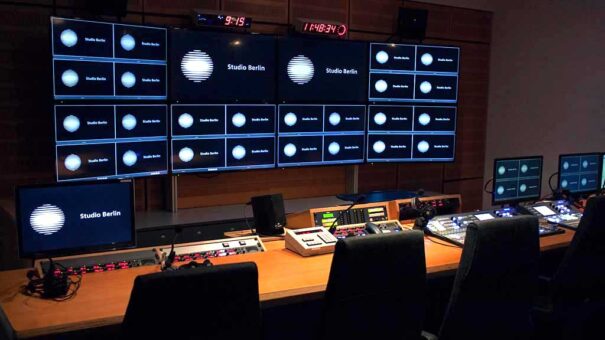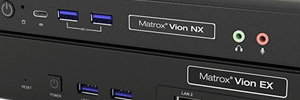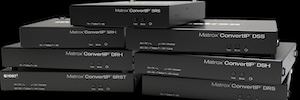Studio Berlin increases channel density with Matrox Video technology
Matrox DSX SDK development platform with Matrox DLE5/X2/100 and M264 S4 cards help technical service provider Studio Berlin boost ingest to 24 channels per System.
Studio Berlin — part of Studio Hamburg Group, with headquarters in Berlin and offices in Cologne and Lüneburg — offers a broad portfolio of services and solutions to realize small to large TV productions.
The company has TV studios in Berlin and Hamburg for talk show and political talk formats, a fleet of four state-of-the-art OB vans for sports and entertainment shows, and flight case solutions for reality TV and show productions worldwide. Studio Berlin also offers post-production facilities in Berlin and Munich, as well as Cologne — where their IT research and development department is also based.
“Our company captures the biggest entertainment, reality TV, political, sports, and TV shows, and we also post-produce the content,” said Martin Oberdorfer, head of IT at Studio Berlin. “More than 15 years ago, when a tape-based workflow was still the standard, we started developing our own tapeless recording servers to provide complete production workflows in combination with our own video asset management systems.”
Studio Berlin specializes in automated, nonstop recordings for productions that require high reliability and availability for daily episodes. Studio Berlin started with one-channel systems and expanded to 16 channels as technology evolved. Over the years, the company has gained experience in several hundred production deployments with well over a million hours recorded. For example, last year the company recorded 24 1080p50 feeds for a concert and used two 24-channel servers for the International Emmy-nominated Amazon Studio comedy show LOL: Last One Laughing in Germany (produced by Constantin Entertainment for Prime Video).
Studio Berlin has now reached 24 simultaneous, full-HD ingest channels on a single video server using two Matrox DLE5/X2/100 capture servers and an M264 S4/100 multichannel, PC-based 4K XAVC encoder/decoder card, which operators control with Matrox DSX SDK. At the same time, this configuration makes it possible to record eight UHD channels 2160p25, which is enough for certain reality formats. Or, with a second M264 S4/100 card, Studio Berlin can record 8x 2160p50 for shows and concerts.
 Storyhotel nonstop
Storyhotel nonstop
Studio Berlin’s Matrox Video-based recording solution is called storyhotel nonstop, which reflects Studio Berlin’s focus on 24/7 recording. Through storyhotel nonstop, Studio Berlin can provide not only high channel density, but also self-sufficient 24/7/365 recording; a remotely monitored and operated system; automated failover scenarios; redundant recording process; MXF OP Atom Wrapper; proxy videos generated in parallel; file validation with checksum verification; file integrity check after file split/close and real-time; file-based data transfer via secured NAS, encrypted hard drive or internet transmission; low-latency live streams from recorded sources; compatible logging app for indexing the content (also remotely via live stream); a integration with on-premises and cloud-based video asset management systems.
Studio Berlin appreciates being able to bring only one system to a production site when it used to send multiple servers. Especially in times of rising costs for transportation and energy, compact systems not only help to save money but also to protect the environment.
“The Matrox DSX SDK is incredible. It has been around for 19 years and is still the preferred platform for developing live video applications on Windows/Linux, regardless of the I/O connectivity required — whether multichannel SDI, ST-2110, or even compressed IP. And the number of Matrox DSX SDK users continues to grow,” said Christophe Crespin, OEM sales manager at Matrox Video, EMEA. “Matrox Video commits a considerable amount of engineering effort to bring development tools to the market that help target live video production in the cloud. It is fair to say that there are still numerous successful applications for 12G-/3G-SDI or ST 2110 workflows.”
“Studio Berlin have a small but very performant engineering team,” Crespin continued. “At Matrox Video, we are very proud to see them achieve this new channel density benchmark using our DSX SDK and OEM product lines.”
Studio Berlin’s Oberdorfer says the company has other ideas that it would like to experiment with in the short term.
“One idea is to cover some specific productions where an ST 2110 infrastructure already exists using the Matrox DLE5Q25 or X.mio5 Q25 NIC cards, which can support up to 32 simultaneous 1080i ingest and playout channels per NIC. This would enable us to go even higher using multiple cards,” Oberdorfer said. “It will depend on how quickly the number of cameras increases on these shows and when they will start transitioning from SDI to ST 2110.”
“On our side, we’re ready. Our X.mio5 ST 2110 NICs use the exact same DSX SDK as the 12G-/3G-SDI cards, so we handle time-stamped video and audio buffers in the same way we do with our current SDI application. All the complexity of ST 2110, NMOS, PTP clock, 2022-7, and telemetry tools will either be managed by the X.mio5 IP or by the SDK.”
Ti è piaciuto questo articolo?
Iscriviti al nostro Nutrire e non ti perderai nulla.















